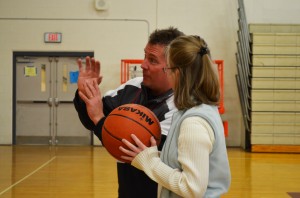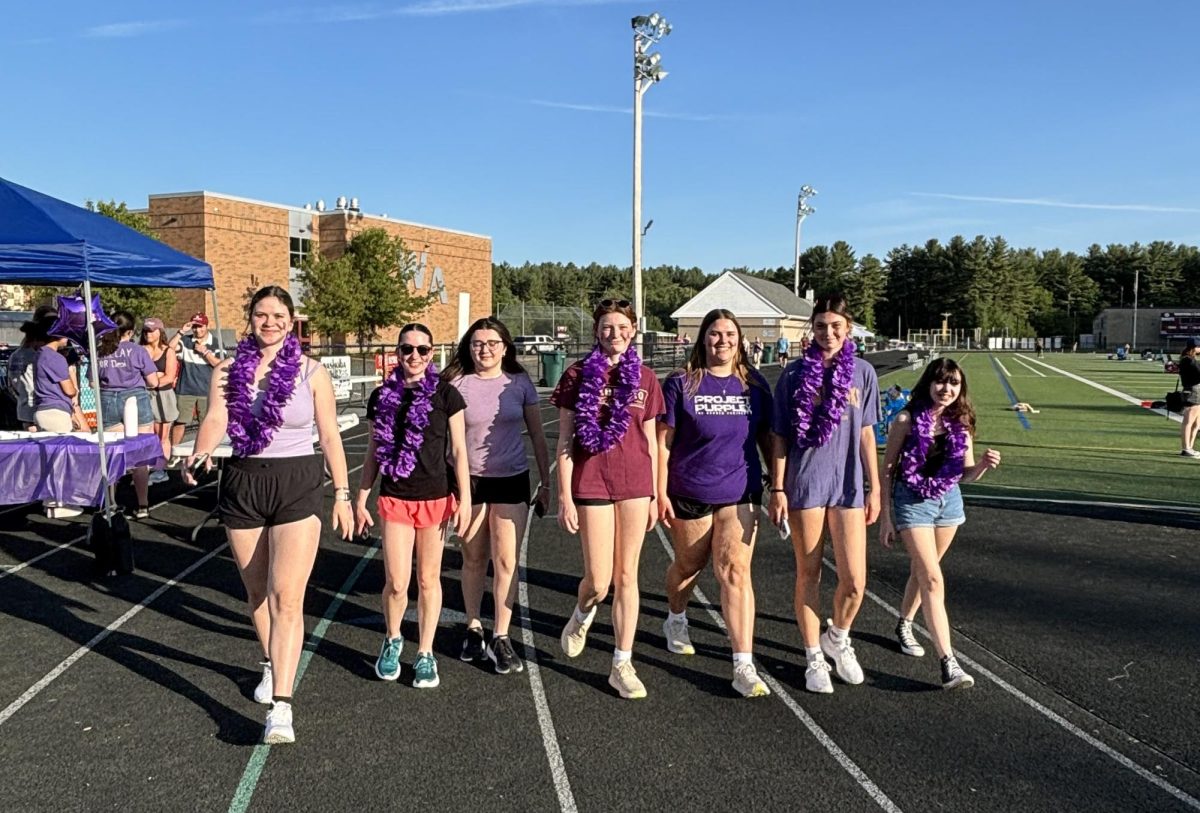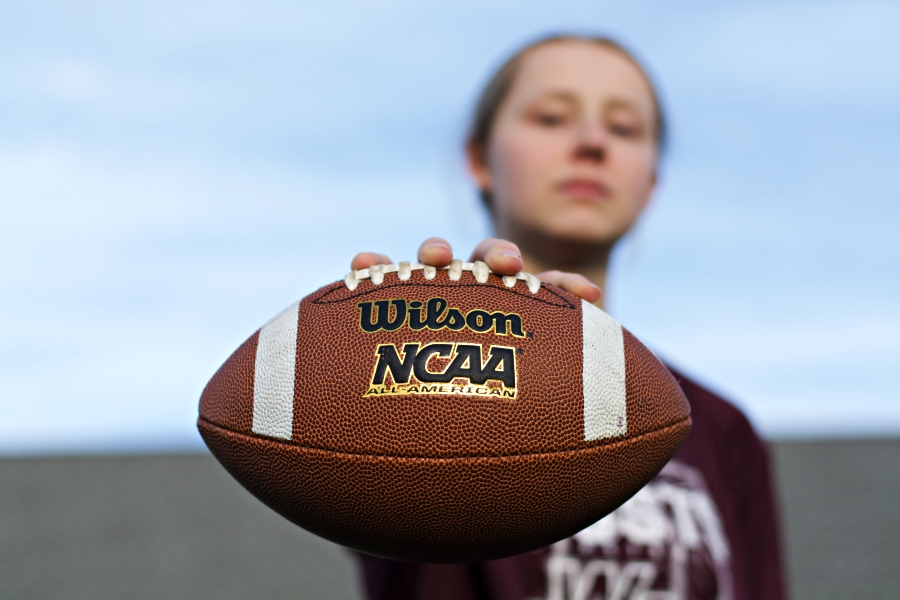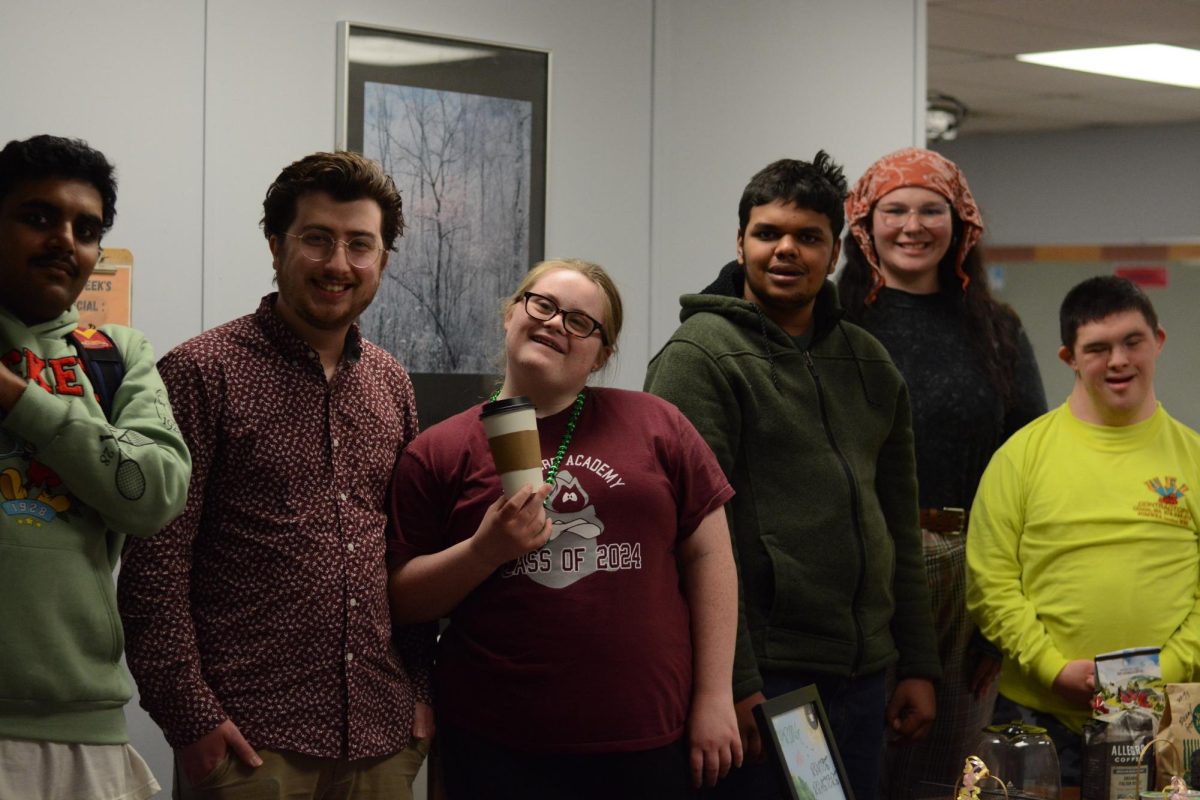
By Abigail Cianciolo
Editor-in-Chief
Fourth lunch is usually a lunch break time for gym classes, a time to take a break and relax. However, Scott Brown, a Westford Academy physical education and health teacher spends his fourth lunches teaching an adaptive gym class for Special Education students every day.
“The curriculum is something that Mr. O’Leary and I designed to mirror the programs we are doing through the mainstream physical education classes,” said Brown.
Adaptive physical education gives some of the students in the Special Education program an opportunity to get out of their classroom and engage in some of the activities similar to those in the regular gym classes. For some students, it is also used as a physical education preview, which prepares students to eventually transition to the mainstream physical education class.
“The goal of the program is one to develop some basic skills, or help students with basic skills that want to extend them. But in addition to that we want to work on social skills,” said O’Leary.
Brown was selected by O’Leary to run the program that started the first week of September. Students participate in activities which include modified versions of basketball, fitness, yoga and ping-pong which encourage being active, working together, and learning new skills.
“I try to keep them active as long as I can. But they’re also learning socially,” said Brown. “I’ve tried to teach them teamwork skills and communication, which are the overarching themes that we have in physical education.”
This class gives students an opportunity to be in a less chaotic environment than the normal gym classes which have up to 50 kids in a class. With such numbers, there is not always the extra support that would be available to them in an adaptive physical education class. All Westford Academy gyms and fields are unused at this time, creating a perfect opportunity for the class.
The students in the program, as well as their teachers, have shown positive feedback to Brown and the Adaptive PE class curriculum.
“Mr. Brown is awesome, he is great with the kids,” said student support teacher, Jennifer Eby. “[The class] is fun because it’s right on their level, it’s not too intensive so they can actually be involved.”
Eby also added that the program gives the students a chance to be with another teacher, besides their student support teachers who they spend the whole day with.
Brown hopes to teach the class again next year so the program will continue to grow. He has thoroughly enjoyed his time teaching and spending time with all of his students.
“It’s funny, the people around the building will say, ‘Oh, it’s a great thing you do, Mr. Brown’ and ‘That’s wonderful’ but it’s just as wonderful for me, because the kids are great and to see the gains they’ve made from September to now just basic things like shooting a basketball, kicking a soccer ball, catching a frisbee, things that someone will take for granted. […] It’s unbelievable,” said Brown. “It’s my favorite class.”







Rob • May 7, 2015 at 5:02 am
Another role of the physical educator is to encourage and motivate children to be active. There are many ways to do this, including promoting community activities, assigning physical activity homework or home fun, showing an interest in the out-of-class physically activity in which children participate.